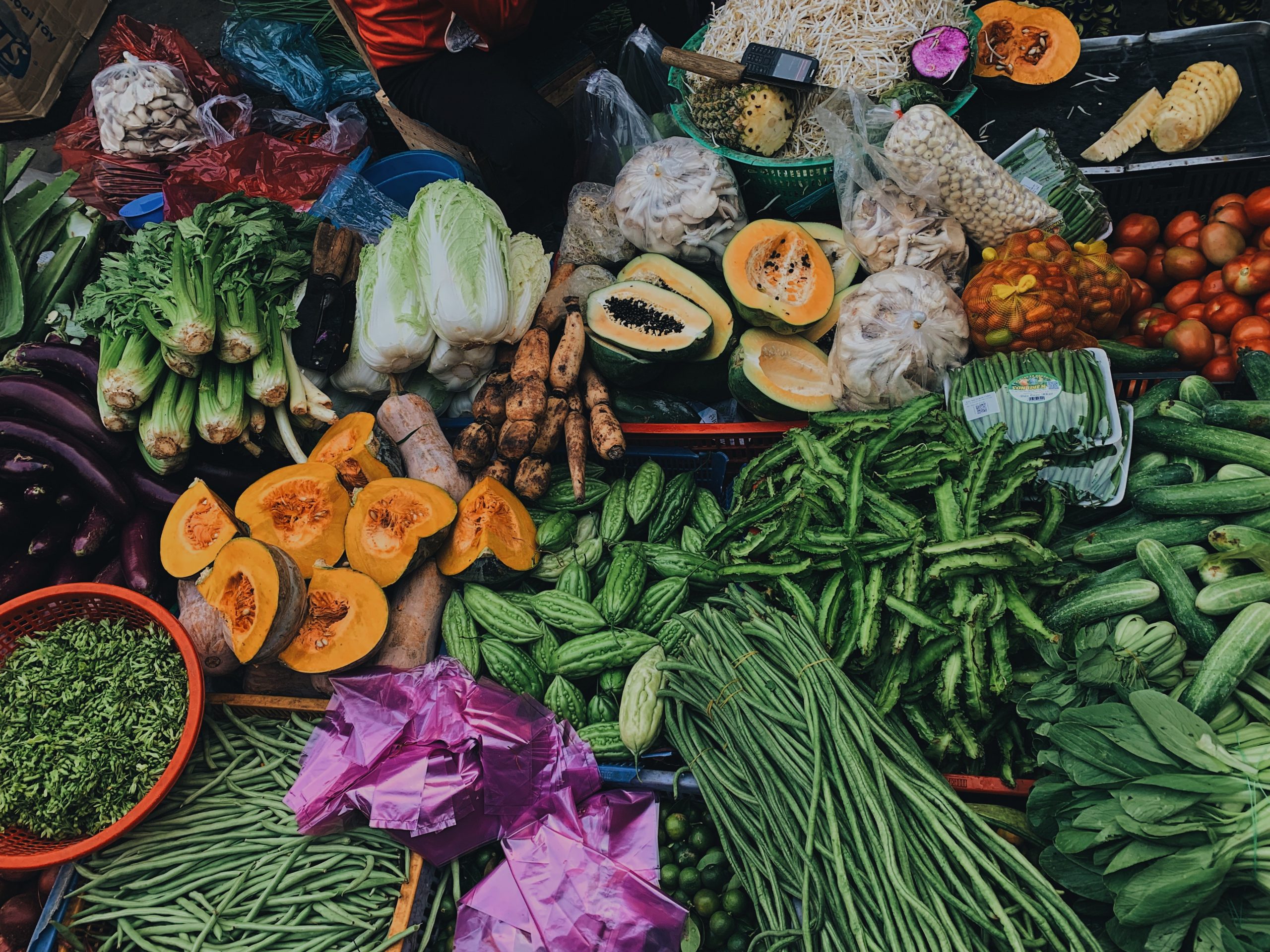Buy Foods Grown Naturally in Peak Season

In honor of National Farmers Market Week (August 1-7), Chef Tommy Hearn, one of our Nourish channel experts, shares tips on shopping local farmers markets (there are over 8,000 registered in the USDA Farmers Market Directory) and ways to prepare the fresh vegetables and other indigenous foods you can buy locally when they’re at their peak and taste their best.
A farmers market is a public and recurring assembly of farmers or their representatives selling the food they produce directly to consumers.
“I really love the small-town farmers markets,” says Chef Hearn. “You can often find the local farmer who only grows four things, but all the care that goes into harvesting those foods is evident and keeps that farm going, which helps the community. You have to support your neighbors, and this is a great way to do it.”
Items sold at the local farmers market depends on its location, the season, and market rules about what can be sold. Some of Chef Hearn’s favorite foods that he stocks up on during peak season are tomatoes, mushrooms, leafy greens, and all varieties of vegetables.
“Leafy greens are becoming superabundant,” Chef Hearn explains. “Kale used to just be that little garnish you’d see on a Perkins plate. Now people are putting Kale in smoothies, in shakes, they’re sautéing them … I love leafy greens.”
In fact, Chef Hearn’s Wellbeats class Root to Leaf demonstrates how to take full advantage of entire carrots – including the leafy green tops.
“You shouldn’t have to peel a carrot ever,” he says. “Carrot skin has tons of nutrients and has a texture that holds up to any cooking method. And the leafy tops, which you may not find in the store but are common at farmers markets, are absolutely delicious.” This class shows you how to prepare the entire carrot including the leafy tops and add nonfat Greek yogurt and various spices and oil to make the recipe “Roasted Baby Carrots with Spiced Yogurt & Carrot Top Pesto.”
Explore new foods
Shopping at a farmers market is a great opportunity to test new recipes and try foods at different stages. “Baby beets taste dramatically different than fully grown beets,” says Chef Hearn. “Same thing with leaves. When they’re babies and have micro leaves, they taste tremendous. And when they’re fully grown they taste different, but also delicious.”
You can also talk to the farmers directly. “If you see something and you don’t know what it is, just ask the farmer: ‘What is this?’ ‘How do I cook it?’ ‘What is this good with?’ They will direct you.” Chef Hearn also assures people to not be afraid of imperfect foods. “Not everything is grown perfectly round or symmetrical,” he says. “Sometimes carrots have two legs on them. That’s absolutely okay. And serving a three-legged carrot to a child is pretty fun to watch.”
Preparation and storage
Leafy greens come in many varieties in addition to Kale. “Vegetable tops, beet greens, carrot greens … anything that has a leaf that’s not rhubarb is fantastic,” says Chef Hearn. “You can use so many different cooking methods: grill it, bake it, braze it, sauté it, steam it, fry it, roast it…it’s like the Play-Doh of the food world.”
He encourages everyone to stock up on fresh produce in season from your local farmers market. “Whatever is in peak season that you love, jump on it,” he says. People use many methods to preserve and store their fresh foods. “Vacuum sealers are super common now,” says Chef Hearn. “It’s super easy and it’s easy to label. You can also pickle, freeze, or can for longer-term storage.”
Support local farmers
Chef Hearn is a Corporate Executive Chef affiliated with Taher, Inc., an organization with 300+ chefs across the country. “We just had our summer conference, and we told all our chefs to find your local farmers and use products that are close to your kitchen.” The organization partners with small farms and farming consortiums to buy local beef, mushrooms, tomatoes – virtually anything grown locally with natural sunlight and natural water. “They taste so much better than something grown 1,000 miles away in a greenhouse.”
So get out there, Wellbeats fans, and buy local! Let’s support our local farmers and communities at our nearby farmers markets.